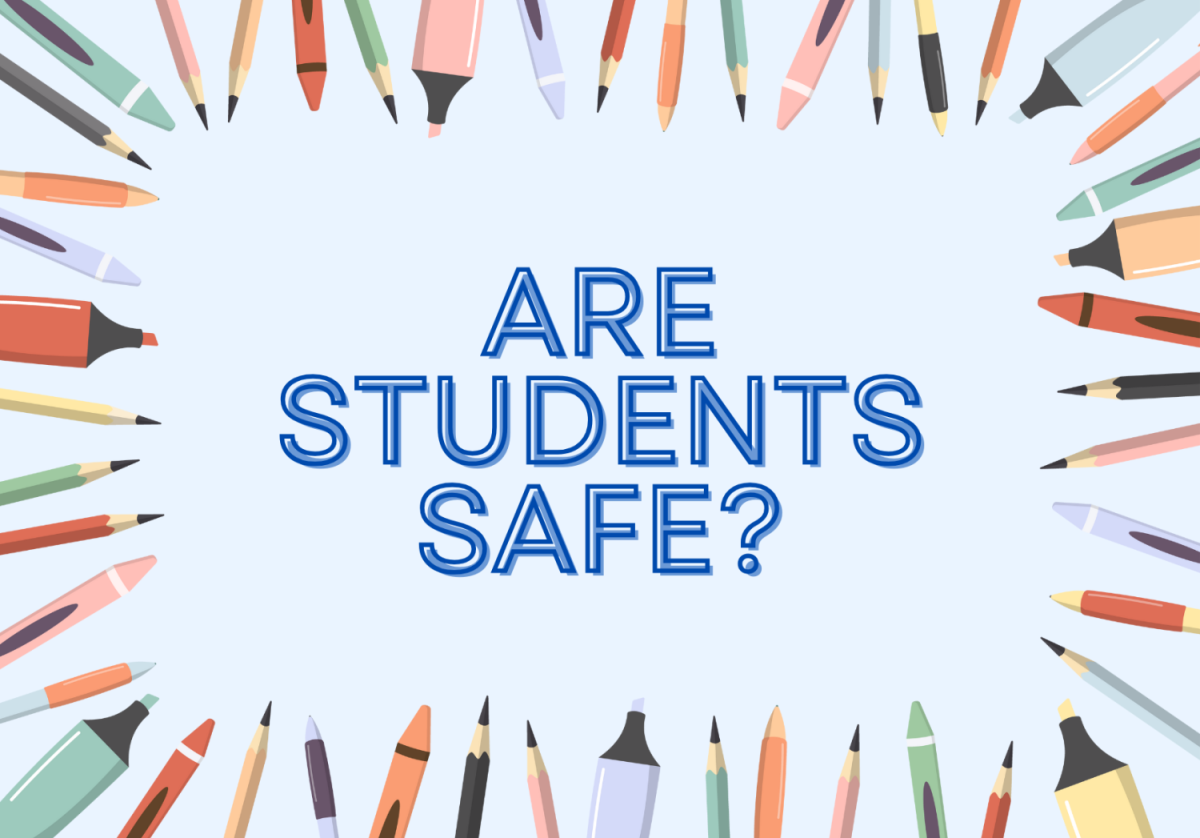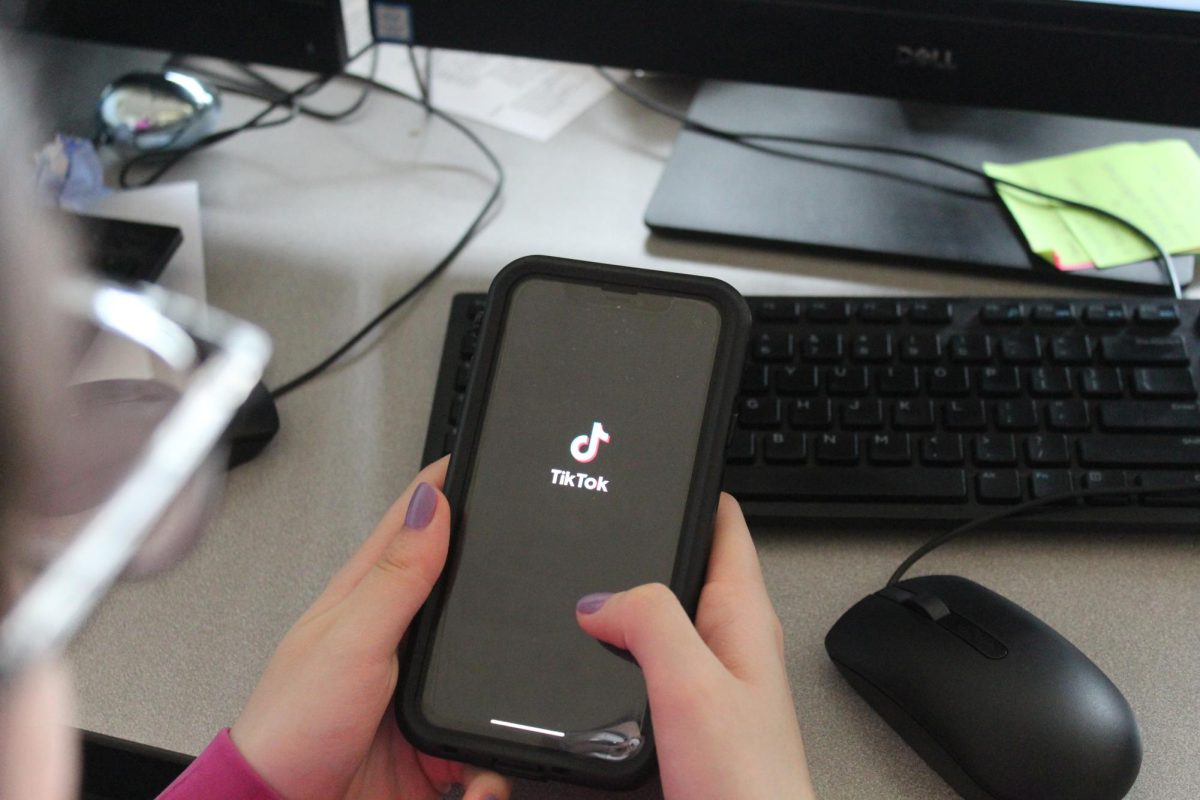On average, 1.5 hours of a 6.5-hour school day is used up by students on their phones. One in four spends 2 hours on their phones. The usage of Phones in and outside of schools is nothing shy of being a well-known and talked-about issue among students, teachers, and parents alike. The forefront issue that is talked about is students being addicted to their phones and how it reflects in their academic life as well as their personal lives.
As institutions nationwide have documented, the average person checks their phones 144 times per day. In children, two-thirds of children spend about 4 hours or more per day on smartphones and 44% of American adults admit to having anxiety when they do not have their phones. Does this all mean having phones is a bad thing? Not necessarily, but how these statistics reflect in the lives of students here at West High is quite important. It gives us deeper insight into how students and teachers alike see how phones are important, but also how they have their negative sides.
Junior Collin Stangl and sophomore Luis Regalado-Macias believe that phone addictions are a big problem at school. ““I think it’s one of the it’s a huge problem that is just overlooked, Everyone always talks how everyone should be on their phones less, yet they themselves are on their phones a gigantic amount, and we just do nothing about it because we claim we need our phones for everyday life, but it gets to a point where we use social media so much, too much, like playing games on our phones, communicating too much,” Stangl says.
However, Stangl recognizes that while phones may provide instant gratification and quick, unfiltered access to information and communication, it’s important to recognize the addiction. “I also see that so many of us have an addiction. We always want to reach for it [phone], and when we don’t even have our work done, we reach for it and want to go on it,” he says.
Reaching for the phone is a common practice amongst students in school, whether students realize it or not. “I see a problem with phone addictions in school. The majority of students take out their phones constantly and do not pay attention in class. Some students may pay attention, but the moment they are done, they grab their phones and carelessly walk around the hallway, which can be a danger if not careful,” says Regalado-Macias.
Academically, students have become reliant on technology and seeing a solution to the issue is difficult. “I don’t really see a solution. I mean, you can’t take away our property, and if you take our phones away, it causes a negative barrier between the student and teacher, and so I feel like without some sort of cost, it would hurt relationships more than help,” says Stangl.
Regalado-Macias on the other hand sees a potential solution, a complete phone ban. “The fastest solution would be to ban phones completely, however, that is very hard, and students are not going to give up their phones,” he says. However, Regalado-Macias recognizes that while this is a quick solution, it may not be the best solution. “The best solution would be for students to realize the harm that they are doing to themselves by being addicted to their phones. The problem with that, however, is that students won’t listen, and they are not told that they are doing things wrong. I believe that teachers NEED to enforce their own rules on phones. When that happens, the students are free of distraction and they can learn.”
Another perspective that gave insight into the issue was PBDA teacher Sue Milligan. “I do not see any positives to students or staff using cell phones during instructional time. Engaging with a phone has about the same impact on effective instruction as releasing a puppy in the classroom. Focus is gone, and education is adversely affected,” says Milligan.
Milligan sees the impact of phones in her classroom each day as she teaches. “I frequently have to repeat directions or questions because students are engaged with their phones instead of focused on instruction. Students miss important information or announcements because they are tuned into something on their phones instead of knowing what is going on around them. Sometimes that distraction is so intense they lose all focus and become distressed,” she says.
Milligan continues in saying that the student’s education is negatively impacted. Since all students at West High have access to a chromebook, the argument for cell phones being necessary in the classroom is unsuccessful. Milligan argues that in order to improve the situation, teachers must enforce stricter cell phone policies. “We either have to ban phones in the school or all teachers must enforce a stricter cell phone policy for the classroom. Other districts have done this successfully. However, in order for a ban to work, the teachers have to be consistent, and the administration absolutely must support the teachers,” she says.
Each year, classroom expectations have become more relaxed, according to Milligan, because teachers are losing their battles, parents may not support the teacher’s expectations, and administrators do not always support the classroom rules with vigor.
The Iowa Senate agrees with Milligan’s viewpoint, with its passing of House Bill 782, which bans any phone usage throughout all school districts in Iowa. However, this brings up interesting questions about whether we could really accomplish a phone ban. Would all teachers and administration be okay and enforce the policy?
When thinking about this issue, problems like the ones brought up by Stangl, Regalado-Macias, and Milligan must be considered. The possibility of student-teacher relationships being tarnished could have a detrimental impact on student engagement and whether or not they work or pay attention in class. But also, the problems that can come from some students not being able to have their phones, as said by Milligan, she has seen students become agitated from not being able to have their phones.
As seen throughout this school, phone addiction has been noticed by teachers and students alike. It seems to be agreed that this issue needs a solution to better the lives of students within the classroom. “Phones are a tool that has great power. Students need to use them as a tool, not a distraction,” says Regalado-Macias.





































